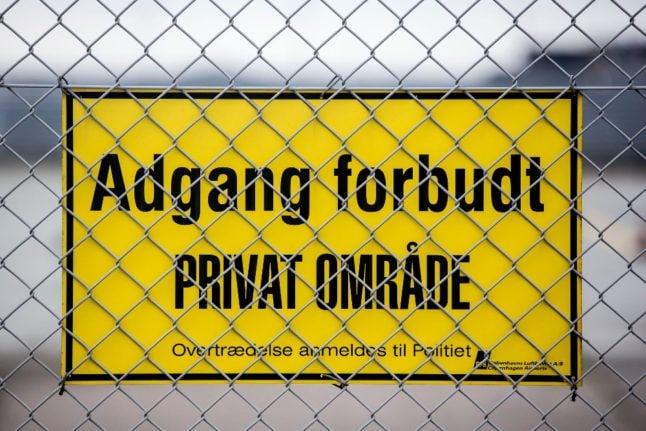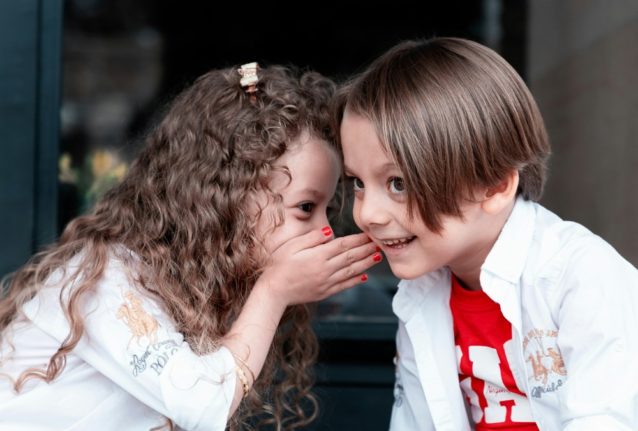The Danish language itself can be pretty scary. As many foreign residents in the country will tell you, it can be elusively difficult to learn.
Even when you have the hang of the basics, understanding different dialects, pronunciation and idioms – not to mention Danish humour – can get your nerves jangling when attempting a conversation.
READ ALSO: The seven stages of learning Danish every foreigner goes through
That’s not exactly what this article is about, though. There are certain Danish words which, when I get a glance of them on an email notification, letter or road sign, make me immediately assume I’m going to have problems.
That’s not always the case, but the corridor of uncertainty elicited by these words never goes away.
E-boks
The name of the most popular platform for receiving secure digital mail in Denmark, e-boks (or e-Boks to give it the correct stylisation) is innocuous in itself, being a contraction of “e-mail” and “box”.
Authorities can send official messages to anyone who lives in Denmark via the e-boks, and that is why a fleeting glance of the word can get the pulse racing.
When I glance a notification on my phone that includes the words du har fået ny post (“you have a new message”) followed by e-Boks, my automatic response is to assume I haven’t paid enough tax this year, have miscalculated my student loan repayment or have otherwise sent in some kind of application or paperwork incorrectly and that I’m now going to face consequences.
Luckily, my e-boks messages most commonly have the subheading betalingsservice, meaning they are a message from my bank letting me know which monthly payments are about to be withdrawn from my account. Hardly a joyous message to receive, but at least it’s not a bolt from the blue.
On a serious note, people who apply for residence permits in Denmark often find out the decision on their cases in a message delivered via e-boks, so receiving mail on the platform can genuinely be triggering.
Inkasso
Inkasso is a word you will see at the top of a letter from a debt collection agency. You might have missed previous bills and warnings and now are being told to pay up or face the music. There will usually be an additional fee, which could be hefty, for the involvement of the inkasso company.
Similarly a rykker (reminder) – the step before the bill gets sent to an inkasso agency – is also a word that can elicit some stabs of fear, as well as an extra charge for late payment.
On the couple of occasions I’ve received such a letter, I was fortunate to be able to bring my heart rate down again by paying straight away.
Togbusser
Literally train buses, these are the replacement rail services that are used, usually on weekends, when parts of the rail network are closed for maintenance works.
When you look up your journey on the Rejseplanner app, it’s the appearance of this word that makes you think your trip from Copenhagen to Aarhus at the end of a heavy weekend is going to end up feeling interminable.
On the bright side, you might get to see a Danish rail station you’ve never been to before, when you pick up the train again to complete your journey on the section of the line that’s still open. I’m stretching a bit for a positive here.
READ ALSO: 17 essential phone apps to make your life in Denmark easier
Fartkontrol
Often cited as one of the most amusing words (in the eyes of an English speaker) in the Danish language, fartkontrol, meaning “speed checks” can actually stress me out.
This is because, like with togbusser, it is likely to signify a badly delayed journey.
While fartkontrol can mean speed checks of any kind, like vans with temporary police speed cameras, I find it to appear most often on motorways where one or more lanes have been closed for roadworks and the speed limit has therefore been reduced on the remaining lanes.
Large sections of the E20 motorway on the island of Funen – which connects the eastern and western parts of Denmark – have had ongoing works to increase to width of the motorway over the last few years, meaning reduced speed on long stretches.
READ ALSO: Danish words that just sound wrong in English
Forbudt
This word comes with a large helping of authority in much the same way its German counterpart verboten and, to a less severe extent, the English translation, “forbidden”.
While “forbidden” seems to be mainly confined to fairy tales in the English language, in Denmark you’ll see forbudt more commonly.
From the same root, the word forbud meaning “ban” is also frequently used by authorities.
An example of this is the opholdsforbud or ban on ‘lingering’ that was put in place in a couple of spots in Copenhagen during the worst parts of the Covid-19 lockdowns. This meant that you couldn’t sit or stand for more than a few minutes without being in violation of the restrictions that were in place at the time.
The opposite of forbudt is påbudt meaning “compulsory” or “mandatory”. This also carries the subtext of “do it or you’re in trouble”. For example, in car parks where use of the parking timer is påbudt, you’re likely to get a parking fine if you fail to comply.



 Please whitelist us to continue reading.
Please whitelist us to continue reading.
Member comments